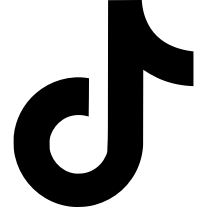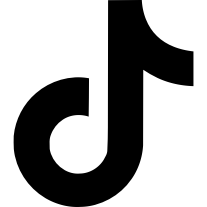
TikTok platform—world leading technological and economic innovation

TikTok is a popular Chinese video-sharing platform that provides free resources for users to watch short videos as a digital video encyclopedia. Recently, TikTok has unlocked the infrastructural turn and expanded services. TikTok has dominated China’s digital platform in just a few years because of its successful business model: the integration of fan economy, sharing economy, and multilateral market economy. However, at the same time of rapid development, many concerns have been raised, such as youth addiction, content review disputes, and control of false information and defamation.
The Development of TikTok

TikTok was launched in 2016 and has successfully transformed in recent years. TikTok originally existed as a short video community specializing in online entertainment.(Zhang, 2021, pp.220) Due to the platform is overly dependent on algorithms and makes young people easily addicted, Tik Tok was interviewed by the government department and criticized by the party-controlled media.(Zhang, 2021, pp.220) Since then, the CEO of TikTok adjusted the development strategy, worked towards building a video encyclopedia, and led TikTok to begin infrastructure turn by developing services in e-commerce, empowering traditional culture, online education, publicizing propaganda and tourism. According to the Chinese TikTok 2020 report, the transformation of TikTok is very successful because Tik Tok’s users increase rapidly, and the number of daily active users in 2020 will reach 600 million in China.(TikTok, 2021)
TikTok Successful Operation
TikTok currently operates in multiple areas as it transforms into infrastructure and occupies a dominant position in digital media platforms. The platform mainly relies on data calculations to recommend the content users are most likely to love on their pages. User data are generated, stored, automatically analyzed, and processed—not just Internet protocol addresses and geolocations but detailed information about interests, preferences, and tastes. (Dijck, Poell & Waal, 2018, pp. 3) TikTok builds an ecosystem with free videos. TikTok uses convenient services to exchange for collecting user information in the ecosystem by default. The platform is also an information transfer station. Users share information of various fields on the platform. The platform is a programmable architecture designed to organize interactions between users. (Dijck, Poell & Waal, 2018, pp. 3) For example, the educational videos on TikTok are within three minutes, or even only one minute, which provide fragments of knowledge and makes it easier for users to understand and remember in a short time. Users learn knowledge in a more convenient way, which also increases the number of platform videos played. TikTok’s most popular videos are in the field of beauty. Users share beauty products and methods with each other. Users can also like, comment, repost favorite videos, and interact with the person who posted the video. Therefore, TikTok depends on a large number of short videos plays to attract investment in advertising and cooperates with multiple platforms to develop a multilateral market economy. For example, Tiktok cooperates with Taobao, which is the hottest shopping platform in China. Platforms are treated as neutral gateways between consumers and multiple applications. (Mansell & Steinmueller, 2020, pp.45) TikTok has also reached cooperation with the Chinese government to promote the development of urban brands in the tourism field.
TikTok business model
TikTok main business depend on sharing economy, fan economy, and multilateral market economy. Firstly, TikTok is based on the sharing economy and promotes collaborative consumption to achieve high profits. TikTok provides free sharing of information to attract a large number of users to use the platform. Platforms use algorithms to automatically filter enormous amounts of content and connect users to content, services, and advertisements. (Dijck, Poell & Waal, 2018, pp. 4) TikTok sends advertisements for products that they are most likely to buy to different user groups. For example, the platform will recommend ads for diapers and baby bottles for users who often watch parenting videos. TikTok will recommend book ads to students who often watch educational videos. Platforms often send such advertisements to users in large quantities and use the excellent spread of the network to maximize the benefits of collaborative consumption. John also believes that social media and ICTs not only enable collaborative consumption but are drivers of it. (John, 2016)
Secondly, TikTok depends on the multilateral market economy and cooperates with multiple stakeholders to create value. Various platforms cooperate, using digital platforms to reduce marginal costs and increase profits. Recently, TikTok often cooperates with various brands and Taobao. After watching the brand’s advertisement, users can directly click on the shopping cart under the video to receive TikTok’s exclusive coupons and automatically jump to the Taobao page for users to purchase.
Finally, TikTok also depends on the fan economy, which is the result of the celebrity effect. Users follow their favorite celebrities on the platform. When celebrities recommend a product, users will have more desire to buy than seeing regular advertisements. Celebrities cooperate with merchants. There will be a shopping cart under his video, users can buy directly, and celebrities can also get advertising fees. This business model is the most efficient way to convert the number of fans into money. For example, a celebrity called Lanpulan received 19,000 likes and sold 7493 of the same product in his video by shopping cart link below his video.(Lanpulan, 2021)
Concerns of TikTok from Users
The main concerns about Tiktok arise by users are privacy, malicious comments, and content moderation. As mentioned above, due to excessive reliance on users’ data analysis, users are shown videos that highly match users’ preferences. It is easy for young people to over-indulge, spend much time on TikTok every day, and delay their studies. (Zhang, 2021, pp.220) In addition, some users worry about being monitored by digital platforms. Based on users’ previous purchase records and video browsing records, TikTok will send them relevant advertisements. For example, a user posted a video on TikTok that suspected the platform might monitor him, and other comments also had such suspicions. (Nidegebilaoshi,2021) Users are also concern about malicious comments on TikTok. The larger the online platform, the more difficult it is to control speech strictly, and it is more attractive to those who seek harm.(Mansell & Steinmueller, 2020, pp.45) TikTok has a lot of unfriendly comments, and it is challenging to manage this phenomenon. Content moderation is often controversial on digital platforms. Many videos do not violate the regulations, but they are taken down, and even if they filed a complaint, it was not easy to resolve. For example, A posted a collection of other people’s videos on TikTok, but it failed content moderation, but the original video was on the platform, which is very unreasonable.(Zhanbaibai, 2021)
Word Court: 1194 words
Conclusion
TikTok is a successful video website in China, and its transformation has brought a good start for development. Strong user computing power lays the foundation for profitability and uses the rapid spread of digital media to cooperate with multiple platforms for development. TikTok’s business model, sharing economy, the multilateral market economy, and fan economy have all created unprecedented benefits for the platform.
Reference
John, N. A. (2016). Sharing Economies. The age of sharing. (pp. 69-97) .Polity.
Lanpulan.(2021).“Empty Bottle Test” This is a real game! This year’s domestic product is the first of its kind. [Video]. TikTok.
https://www.douyin.com/video/7008951802963954975?previous_page=app_code_lik
Mansell, R., & Steinmueller, W. E. (2020). Economic Analysis of Platforms. Advanced introduction to platform economics. (pp.35-54)
Nidegebilaoshi. (2021) Do you always feel like you are being monitored. [Video]. TikTok.
https://www.douyin.com/video/6989565825132809503?previous_page=app_code_lik
TikTok. (2021). The full version of 2020 TikTok Data Report is out! Come and see what happened to TikTok this year. [Video]. TikTok.
https://www.douyin.com/video/6920434009621286151?previous_page=app_code_link
Van Dijck, J., Poell, T. & de Waal, M. (2018) The Platform Society as a Contested Concept. The Platform Society. (pp. 5-32). Oxford University Press.
Zhang, Z. (2021). Infrastructuralization of Tik Tok: transformation, power relationships, and platformization of video entertainment in China. Media, Culture & Society, 43(2), 219–236. https://doi.org/10.1177/0163443720939452
Zhanbaibai. (2021). [Video]. TikTok.
https://www.douyin.com/video/7015903683896429865?previous_page=app_code_link